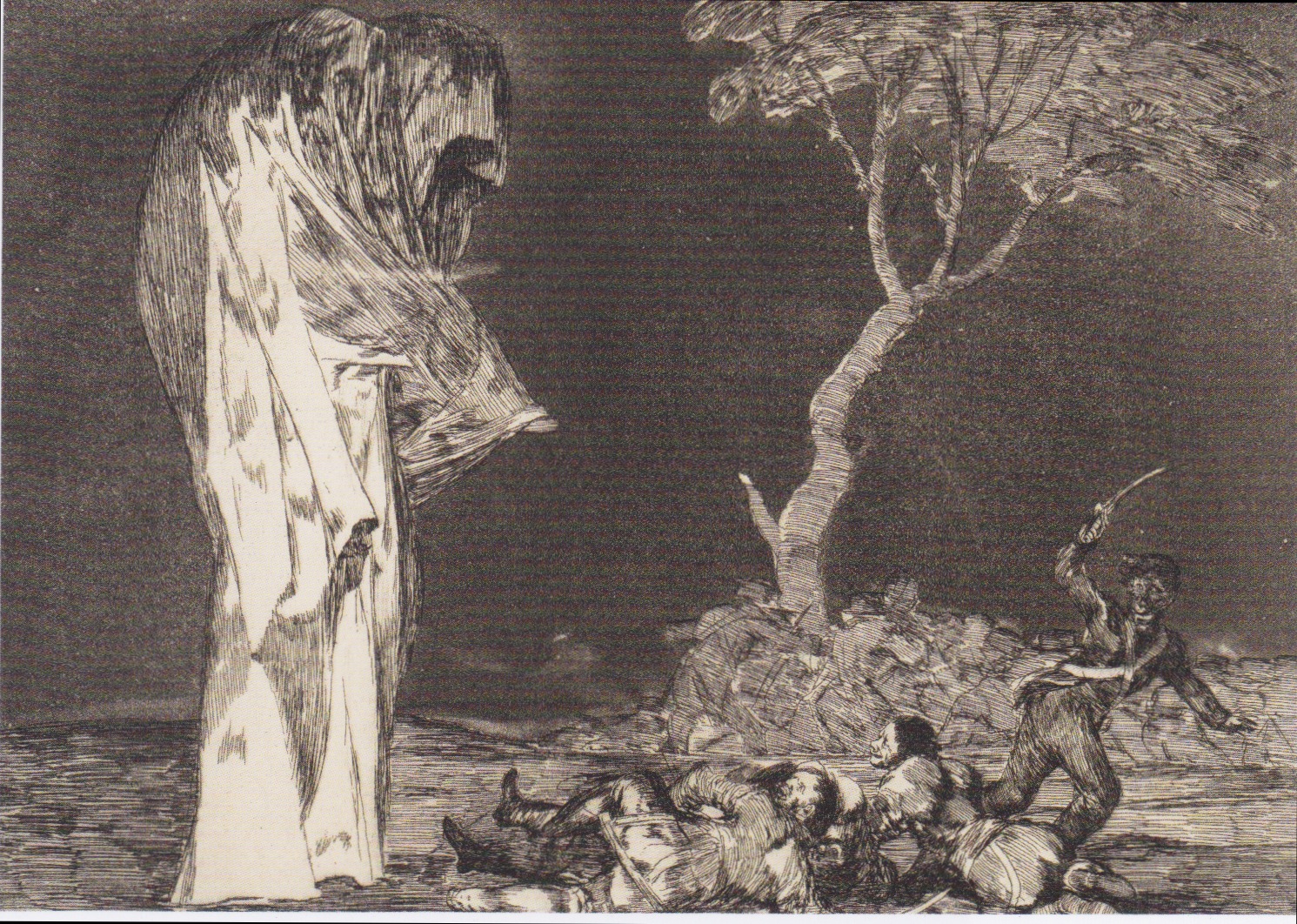When we first began working out ideas for this installation, I knew I wanted to make a series of “figures”. For our previous installation I’d made what I think of as “set pieces”: furniture and large space-defining objects. This time I wanted not just to define the space but also inhabit it with “actors”. Exactly who they were and how they looked was still a mystery. But I knew I wanted my figures to be at once frightening and yet elegantly female.
I have long been haunted by Goya’s vision of a colossal monk-like figure terrifying soldiers, and What a tailor can do, filled with a tree dressed as an overpowering monk, both from Los Caprichos. Like scarecrows, costumed figures from a Dogon secret society ritual, or much of Alexander McQueen’s later work, each is an image of a figure defined by their clothes. The entire costume ensemble – heads, hands, feet, clothes - creates an experience of a sprit character.




Surrounded by Laurie’s representational drawings, my three-dimensional figures had to be abstract yet still contain gesture, movement and, technically significant, volume. I had to figure out how to create an armature that would express all those things without using anything like a realistic mannequin. After looking a lot at Louise Bourgeois’ installations, I decided to use a combination of wire dress forms and the crossed sticks used to make scarecrows. Through trial and error, I came up with an aesthetic vocabulary that included their armatures as well as decorative details.
Laurie made figures frozen in time by the eruption as they go about their daily routines. They stare out at us from inside the walls. At the same time, my figures, released from the walls by the eruption, would inhabit the open floor of the atrium space. If Laurie’s figures were the home’s inhabitants, and mine were the spirit inhabitants, then I needed to understand their specific attributes. All the time I worked on them I couldn’t get my mind to say exactly who they were. At first I tried to use attributes of the major Roman female goddesses to guide my designs. That helped for a while, but the details of their stories and characters never really interested me. I kept asking the question, who are these spirits?
As we were making the narration for the video of the installation, Laurie had very clear and concrete descriptions of her figures. Although I had the same kind of specificity about the furniture and the frames, I was much more foggy about my figures. She pushed me to be explicit about their meaning.
I realized they come from a more primitive place than the Roman pantheon. They are like the Furies who emerged, in some accounts, from a union between air and Mother Earth. Created in a time before rationality, driven by a need to revenge humanity’s disregard and destruction of nature, my spirits were released from the walls of our house by the eruption. Echoing the disruptions in the mural, where the moon and a black sun shine simultaneously and waves disrupt the sky, these ancient spirits suggest that Nature might, indeed, be seeking vengeance for humanity’s negligence.














































